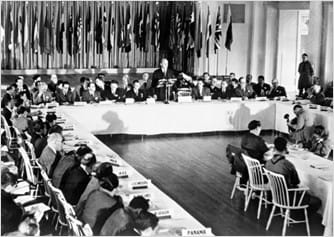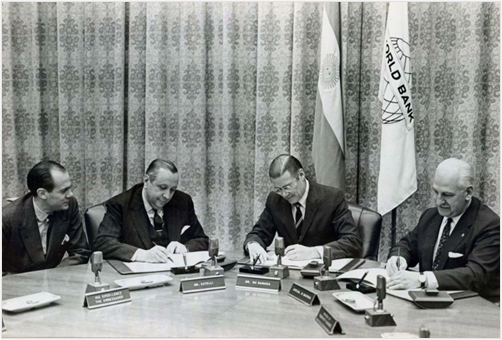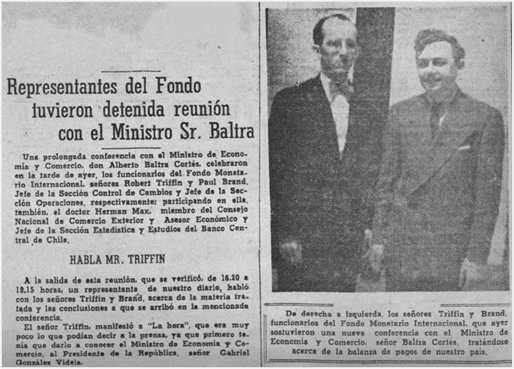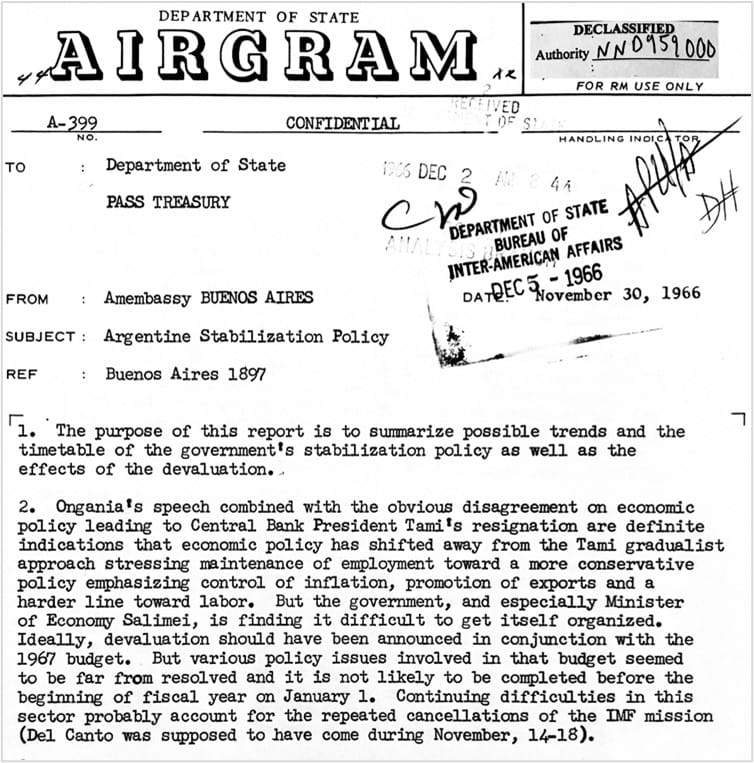Latin America’s Southern Cone during the Bretton Woods Era (1945-1971)
In this post Uziel Gonzalez-Aliaga of the University of Oxford discusses their ongoing research, supported by the EHS Research Fund for Graduate Students.
—
An international monetary system (IMS) is defined as the institutional framework that governs cross-border payments. Over the centuries, various IMS’ have emerged, from the 19th-century gold standard to the present regime characterised by fluctuating exchange rates and capital mobility. My research focuses on the post-war Bretton Woods system, which relied on pegged exchange rates, capital controls and the US dollar as the world’s reserve currency.
The Bretton Woods IMS, which operated from 1945 to 1971, was distinguished by its commitment to international cooperation and non-discrimination (Schenk, 2021). To ensure compliance with the IMS’ rules, new multilateral institutions were established, most notably the International Monetary Fund. One of the key objectives of this post-war IMS was to gradually dismantle foreign trade regulations inherited from the interwar period. Nonetheless, intricate economic and political challenges prompted most members to rely on current account controls longer than expected.

Note: The 1944 Bretton Woods Conference, involving representatives of 44 nations, was the main forum for discussing the rules of the post-war IMS. This Conference resulted in the creation of the International Monetary Fund and the International Bank for Reconstruction and Development (future World Bank).
Extensive research has examined the evolution and challenges of the Bretton Woods system, with a particular focus on the involvement of industrial countries (Eichengreen, 2021). There has been less scholarly attention paid to the experience of developing nations, which nevertheless benefited to varying degrees from the Bretton Woods institutions, from periodical technical assistance to financial support (Kugler & Straumann, 2020) (Image 2). This continuing relationship suggests that the interactions of developing countries with the Bretton Woods system are key to understanding the “broader functioning” of the post-war IMS.

Note: In December 1968, the World Bank made a U$82 million loan to assist Argentina in building El Chocon-Cerros Colorados, the largest hydroelectric project ever undertaken in the country.
Seeking to explore that relationship, my thesis delves into the experiences of two lesser-explored members of the Bretton Woods system, Chile and Argentina. These cases are especially relevant for the post-war IMS, given that both Latin American economies embarked on ambitious yet precarious state-led industrialisation strategies. The enduring challenges posed by the ISI model, coupled with global shocks, prompted these nations to seek ongoing support from the Bretton Woods institutions (Image 3).

Note: The IMF did not relegate the Southern Cone to minor staffers. In 1947, 36-year-old Robert Triffin (on the right) was sent to Santiago to discuss Chile’s exchange system reform.
Drawing on records from multilateral institutions and central banks, I analyse the main interactions between the two Southern Cone economies (Chile and Argentina) and the Bretton Woods IMS. These interactions encompass a spectrum of effects, from Chile’s reliance on multiple exchange rates to Juan Domingo Perón’s unsuccessful “bilateral bet” in Argentina and the subsequent regional shift towards multilateralism and international financial integration (García Heras, forthcoming). Furthermore, global developments such as the sterling crisis of 1947, the emergence of the dollar area, and the system’s liquidity problems are also considered.
The generous support of the EHS Research Fund has been instrumental in enriching the primary sources for my dissertation. With this assistance, I was able to conduct my research at the US National Archives (College Park, Maryland), where declassified documents from various federal departments shed invaluable light on the dynamics of Southern Cone economies and their interactions within the post-war IMS (Image 4).

Note: RG 56 (Department of State) and 59 (US Treasury) preserve valuable US records for economic historians. Among the documents are confidential reports that provide detailed evidence of troubled episodes of economic stabilisation.
References:
Eichengreen, B. (2021). Bretton Woods After 50. Review of Political Economy, 33(4), 552–569. https://doi.org/10.1080/09538259.2021.1952011
García Heras, R. (forthcoming). Argentina’s Creditworthiness Achievements and Problems, 1955-1962: The Role of Institutions, Policy Makers and External Agents, Revista de Historia Económica – Journal of Iberian and Latin American Economic History.
Kugler, P., & Straumann, T. (2020). International Monetary Regimes: The Bretton Woods System. In S. Battilossi, Y. Cassis, & K. Yago (Eds.), Handbook of the History of Money and Currency. (pp. 665–685). Springer Singapore. https://doi.org/10.1007/978-981-130596-2_25
Schenk, C. (2021). International Economic Relations since 1945 (Second edition). Routledge.
To contact the author:
Uziel González-Aliaga
uziel.gonzalez@history.ox.ac.uk
University of Oxford

